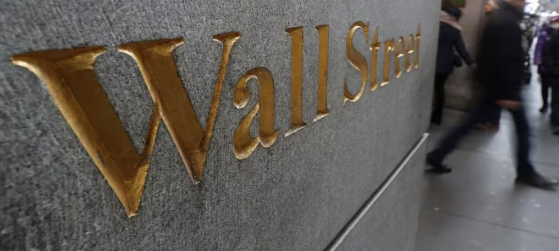Nvidia Becomes World’s Highest Market Cap Company on Nasdaq
Nvidia has surpassed Microsoft to become the world’s most valuable company listed on the Nasdaq, with a market cap of $3.335 trillion following a recent ten-for-one stock split. Microsoft is valued at $3.315 trillion, while Apple is close behind at $3.285 trillion. Nvidia’s stock price surged 591,078% since its 1999 IPO. Investors are now eyeing the next hot tech stock as the market shows robust performance driven by the tech sector.
Source: Financial Express
Oil Prices Hit Seven-Week High Amid Demand Optimism and Geopolitical Tensions
Oil prices surged to a seven-week high, with Brent crude futures for August rising to $85.53 per barrel and the September contract to $84.74. This increase is driven by optimism about summer demand and concerns over geopolitical tensions, including a Ukrainian drone strike on a Russian oil terminal and potential conflict between Israel and Hezbollah. Despite a rise in U.S. crude inventories, global oil balance optimism persists.
Source: Live Mint
India Monetises ₹3.85 Trillion in Assets Under National Monetisation Pipeline
Since FY22, the Indian government has monetised assets worth ₹3.85 trillion through the National Monetisation Pipeline (NMP), with ₹1.56 trillion raised in FY24 alone. Despite a 11% shortfall against the ₹4.33 trillion target, key ministries like Road Transport, Coal, and Power have achieved significant results. The railways sector lagged, failing to monetise core assets. The NMP aims to leverage private sector efficiency to boost infrastructure investment.
Source: Business Standard
Consumer Durable Loans in Metro Cities Surge 323% Over Five Years
Consumer durable loans in metro cities have surged by 323% from ₹6,061 crore in March 2019 to ₹25,654 crore in March 2024, driven by strong urban demand. The total consumer durable loans across India grew to ₹40,432 crore, with metro and urban areas comprising 77% of this. The RBI is monitoring this rise, increasing risk weights on unsecured loans to maintain financial stability. Experts advise banks to diversify to mitigate risks.
Source: Financial Express
India May Need New Poverty Estimates: Bibek Debroy
India might require new methods to measure poverty, surpassing the decade-old Tendulkar Committee findings, according to Bibek Debroy, chairman of the Economic Advisory Council to the Prime Minister. Speaking at the MoSPI conference, Debroy highlighted the limitations of the Rangarajan committee report and the Multidimensional Poverty Index (MPI). He emphasized the need for a precise poverty line to effectively apply the new Household Consumption Expenditure Survey data. State-wise Gini coefficients could also provide better insights into inequality.
Source: Live Mint
Vodafone Idea Sells $2 Billion Stake in Indus Towers; Airtel Acquires 1%
Vodafone Group plans to sell an 18% stake in India’s Indus Towers for up to $2 billion, increasing from the initial 10% intended. Vodafone, which holds a 21.5% stake, aims to use the proceeds to repay debt. Over 615 million shares were traded on June 19. Concurrently, Bharti Airtel acquired approximately 1% (26.95 million shares) of Indus Towers, raising its stake to 47.95%.
Source: Live Mint
DGCA Recommends 25% Women Workforce in Airports, Airlines by 2025
The Directorate General of Civil Aviation (DGCA) recommends that Indian airports and airlines have at least 25% women at various levels by 2025. The DGCA urges organizations to review HR policies for gender bias, publish job openings encouraging female applicants, and offer flexible working conditions. They should also track gender diversity progress and support women returning to work post-parenting breaks. Currently, women pilots constitute about 14% of India’s flight crew.
Source: Business Standard
India Approves $9 Billion Vadhavan Port to Boost Europe Trade
India’s cabinet has approved the development of a new deep-water port, Vadhavan, on the western coast near Mumbai, costing $9.14 billion. Announced by Information Minister Ashwini Vaishnaw, the port will enhance sea and rail links between India and Europe through the Middle East. It will feature terminals for mega vessels, petroleum, and automobiles, with an annual capacity of 298 million metric tons. The first phase is set for completion by 2029, aiming to significantly boost economic activity.
Source: Reuters
Sebi Relaxes Demat and Mutual Fund Nomination Norms
The Securities and Exchange Board of India (Sebi) has scrapped its rule requiring demat and mutual fund holders to submit nomination details by June 30, 2024, to avoid account freezing. Feedback from market participants highlighted accessibility issues and administrative challenges, particularly for older investors and smaller brokers. This regulatory u-turn aims to ease compliance and enhance investor convenience while still urging new investors to provide nomination choices.
Source: Financial Express
Broader Markets End Longest Winning Streak of 2024
The broader market indices ended their longest winning streak of the year, with the BSE Midcap falling 0.9% and the BSE Smallcap declining 0.6%. This marks the first decline in 10 sessions due to profit booking. Despite a sharp bounce-back post-June 4, which indicated investor confidence in political stability, analysts caution that over-stretched valuations may lead to a 5% correction ahead of the Budget next month.
Source: Financial Express
Budget 2024: Income Tax Exemption Limit May Rise to ₹5 Lakh
Finance Minister Nirmala Sitharaman’s Budget 2024 might increase the income tax exemption limit from ₹3 lakh to ₹5 lakh under the new tax regime. The government is also considering tax cuts for individuals earning up to ₹10 lakh. Factors influencing these changes include economic recovery, government priorities, and revenue considerations. Additionally, revisions in Section 80C and interest deduction limits under Section 24(b) are anticipated to further support taxpayers.
Source: Live Mint
Centre Hikes Kharif MSP by 5-12.7%; Paddy Up by ₹117 per Quintal
The Union Cabinet has increased the Minimum Support Price (MSP) for Kharif crops by 5-12.7% for the 2024-25 marketing season. Paddy, the main Kharif cereal, saw a ₹117 per quintal rise, setting the new MSP at ₹2,300 per quintal. This increase, lower than the previous year’s ₹143 rise, aligns with trends showing higher hikes for pulses and oilseeds. The MSP hikes will transfer an estimated ₹2 trillion to farmers, despite criticisms of limited procurement impact.
Source: Business Standard


Leave a Reply